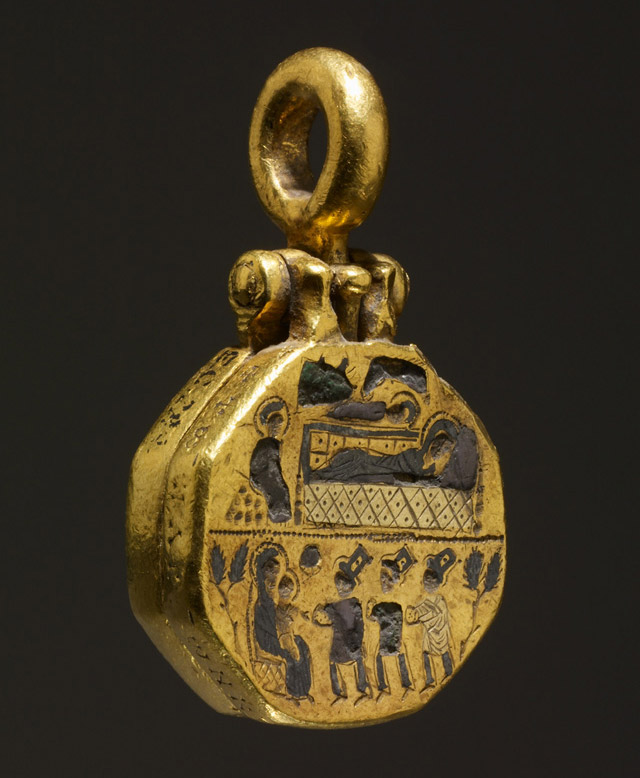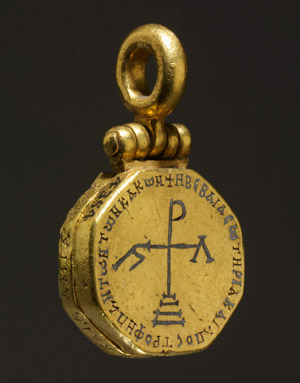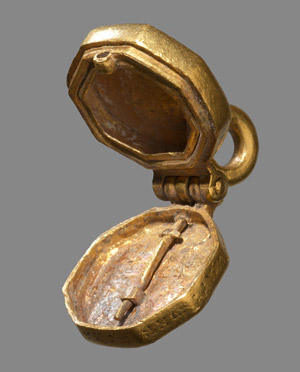Reliquary Pendant with the Adoration of the Magi
The British Museum, London
Copyright © The Trustees of the British Museum

 Select the image to zoom
Select the image to zoom
On its front, this octagonal locket bears scenes of the Nativity and the Adoration of the Magi, divided by a dotted horizontal line. The upper portion shows the Virgin lying on a bed, with Joseph on the left. Above her the infant Christ lies beneath a watchful ox and ass. In the lower section a seated Virgin holding Christ is presented with gifts by the three Magi, who stand one behind the other. This scene is framed by large plants. A symbol is etched in the center: a monogram based on the form of a raised cross. The terminations of the arms have been interpreted as holding magical or numerological significance. The inscription on the rim refers to Cosmas and Damian, twin saints martyred in the third century, known as anargyroi (lit. without money), who healed the sick without taking payment. Their cult originated in the region of Cyrrhus (Kyrros) in northern Syria. By the fifth century the popularity of the two saints had expanded throughout Christendom: in Rome a chapel was built in their honor by Pope Symmachus (r. 498–514). Cyril Mango (1994) suggests that the connection of the Marian scenes with these saints might stem from the proximity of shrines dedicated to the Virgin Mary and to Cosmas and Damian around Blachernae, Constantinople. The healing symbolism of the twin saints suggests that this reliquary was a type of medical amulet, intended to protect the wearer from illness. The hinged loop at the top would have been for suspension, so that the locket could have been worn or held. The locket contains a cavity, closed by a sliding pin, that probably contained relics.






